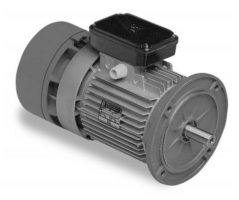
15
The motor operates with constant load
for a period of time sufficient to achieve
the thermal equilibrium.
Service Duty Types
ts
Power
一般特征
The most common duty types are described in this paragraph and a method to calculate the permissible power rise-up is
given. Please contact MGM for different types of duty.
Continuous duty S1
Temperature
The motor operates with constant load
for a limited period of time not sufficient
to achieve a thermal equilibrium. The
remaining period of the cycle is a rest
period, during which the motor cools
down to the ambient temperature again.
Power
ts
Limited length duty S2
Temperature
tc
ts
Power
tr
The motors follows a cycle including an
operation period with constant load (ts)
and a rest period (tr). The synthetic indi-
cation of the duty is given by the inter-
mittent percentage ratio related to a
period of time, which usually is 60 min.
(f.e. 15% - 60 min.).
Temperature
Intermittence ratio =
ts
ts + tr
•
100%
Periodic intermittent duty S3
Power (S2 or S3 duty cycle)=K•Nominal power
Where K is a coefficient given by the following diagrams:
S2
1,0
1,1
1,2
1,3
1,4
10
30
60
60
75
0
K
Time (min)
S3
1,0
1,1
1,2
1,3
1,4
10
20
50
70
100
0
K
Duty %
30
40
60
80
90
A motor designed for S1 duty but running on S2 or S3 duty can provide a power output higher than the rated one on S1 duty.
However, the starting torque remains the same on all duties.
The permissible approximate output power for single speed motors can be calculated as follows:








